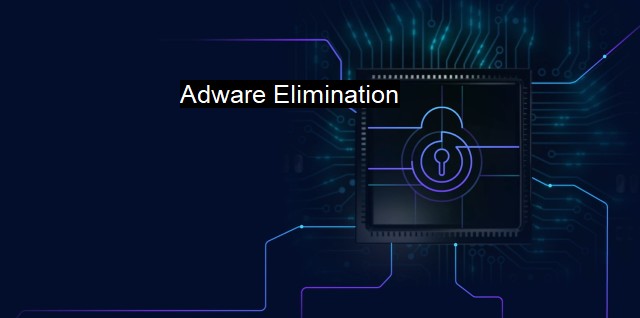What is Adware Elimination?
Secure Your System: The Importance of Adware Elimination in Cybersecurity and Antivirus Systems
Adware elimination refers to the process of detecting, preventing, and removing unwanted software, or 'adware', that delivers unwanted advertisements to users' devices. This type of software often comes disguised as legitimate software or is embedded within free-to-download software applications, unknowingly installed through deceptive advertising and bundling with other programs.In the realm of cybersecurity and antivirus systems, adware elimination is a significant function in ensuring computer systems' security. Cybersecurity refers to the practice of protecting digital data, computer networks, and systems from digital attacks which aim at accessing, changing, or destroying the sensitive information, interrupting regular business processes, or extolling money from users. Adware could give threat actors access to the system, turn the device into a tool for illicit activities like malware spread, or be utilized for revenue-oriented ambitions.
Adware is primarily created to generate revenue for its developers by displaying unwanted advertisements on a user's computer software. Often, the ads generated by adware are customized to target the user based on analysis of the user's search history, opening up potential breaches of data privacy. These unwanted programs can hamper the performance of a computer by consuming bandwidth and memory resources, making devices slow and less responsive.
Adware elimination becomes an essential part of an overall cybersecurity solution owing to these issues. Antivirus software exists to ferret out threats such I as adware and steer the device away from infecting payloads. Quality anti-adware tools not only identify adware that already exists on a computer system but prevent the installation of new adware, acting as a long-standing barrier between potential threats and the device.
Adware elimination involves several steps in which IT professionals or automated processes are used. The process begins with scanning the computer system using anti-adware tools for potential threats. When threatening software is detected, it’s marked as malicious software for elimination or put in a secure area (a quarantine) where the file can't harm your device.
Good adware elimination tools present a report detailing the types and quantity of adware identified to help the user better understand the security stance. It informs them about where their system stands vulnerability-wise. Most importantly it offers removal of these infections. It is essential always to keep antivirus software up-to-date to take high sweeping actions like adware elimination since new forms of adware are created continually.
The prevalence of adware reflects on growing dependence on digital technology, smartphones, and social media platforms, coupled with the tendency to download and install free software or apps. Given the potentially harmful effects of adware on a device, we must pay attention to what we're downloading and installing on our computers, particularly when those sources are not credible.
Prevention strategies like being wary while browsing certain websites or downloading software connected to untrustworthy sources form an essential part of securing systems from adware. Other methods include maintaining a secure firewall and regularly operating system updates.
In the grand world of cybersecurity, adware is a part of The Big Picture. Like any form of malicious software, adware aims to profit at the user's expense, unlawfully breaching one's privacies, system operations, and sense of security. Coupling the line of defense, which is the antivirus software with the common caution, will enhance the user's ability to prevent adware in the cybersecurity context.
Adware elimination is a continually evolving practice due to evolving security challenges. It's a significant player in keeping the digital ecosystem reliable and secure. It's a near source of protection by reduced vulnerability to adware fueled threats, leading to secure system operations. Although minor, adware forms a critical segment of cybersecurity threats we face today, making adware elimination a relevant issue that demands year-round awareness and constant vigilance.

Adware Elimination FAQs
What is adware and how does it affect my computer?
Adware is software that displays unwanted advertisements on your computer. These ads can slow down your computer, track your internet activity, and even steal your personal information.What are some signs that my computer has adware?
Some signs that your computer has adware include pop-up ads that appear even when you're not browsing the internet, changes to your homepage or search engine, and slow computer performance.Can I eliminate adware without antivirus software?
Yes, it's possible to eliminate adware manually without antivirus software. However, this can be a complicated process that involves editing your computer's registry and deleting files. It's generally recommended to use antivirus software to ensure that all adware is properly removed.How can I prevent adware from infecting my computer?
To prevent adware from infecting your computer, you should be cautious when downloading software from the internet. Only download software from reputable sources, read reviews before downloading, and always opt for the custom installation option to avoid installing additional unwanted software. Additionally, keep your antivirus software up-to-date to help detect and eliminate any potential threats.| | A | | | B | | | C | | | D | | | E | | | F | | | G | | | H | | | I | | | J | | | K | | | L | | | M | |
| | N | | | O | | | P | | | Q | | | R | | | S | | | T | | | U | | | V | | | W | | | X | | | Y | | | Z | |
| | 1 | | | 2 | | | 3 | | | 4 | | | 7 | | | 8 | | |||||||